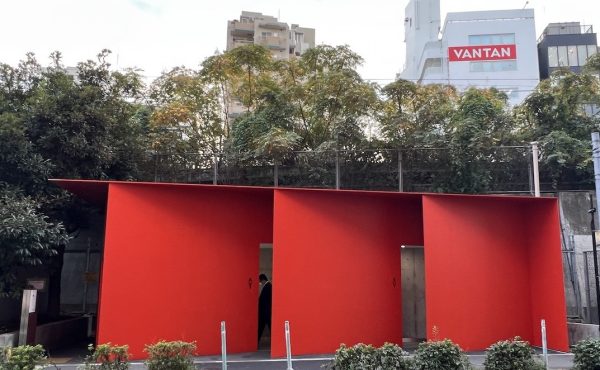
Toronto is often called ‘a city within a park,’ a nickname which not only conjures a pretty picture but is a pretty good goal for any city. In some ways we do live up to the name – there are over 1,500 parks across Toronto that cover more than 20,000 acres and the number grows each year. This year alone nine new parks are expected to be added to the list and over the next few days I’ll be introducing some of these new and soon-to-be parks.
![]()
Further east along the waterfront, tucked under Eastern Avenue at the Richmond and Adelaide overpasses is the soon-to-be Underpass Park. Another of Waterfront Toronto’s cutting edge ideas, the park will transform an under-used and derelict space into a “bright, new, urban amenity.” Since downtown raised thoroughfares, such as the Gardiner and Eastern Ave., are such visually and physically imposing obstacles, the park creates an essential pedestrian connection between the north and south sides of the overpass.
Like Sherbourne Common the park has been designed by the Vancouver-based landscape architectural firm, Phillips Farevaag Smallenberg, with an innovative design that maximizes the existing conditions – especially the more than 50 overpass columns. Understandably, light will feature prominently in the new space making it safe and attractive at all times of the day. Recreational facilities, climbing structures, and “flexible community space” will take up much of the covered areas while the opened areas will be defined by greenery – groves of trees and grasses as well as community gardens.

The park is part of larger plans to redevelop the West Don Lands, a part of the city which, as Toronto Star’s Christopher Hume described, has been a “hole in the urban fabric for as long as most of us can remember.” The area will become home to into a new mixed-use and mixed-income community. Underpass Park is being built in two phases, the portion east of St. Lawrence Street will be completed first due to it’s proximity to the River City development, the new TCHC complex on King St, and the Don River Park, whereas the western portion (directly under the Adelaide and Richmond ramps) will be constructed soon after.
Construction began in May and the first part of the park is expected to open sometime by the end of this year. Already the wall of graffiti along St. Lawrence Street has disappeared and in its place are backhoes and some freshly poured concrete. The concrete will soon be covered with ipe wood and will transform into one of the park’s defining design features – a series of long, narrow ribbon-like strips – the dividers, walkways, and benches of the park.

Top photo courtesy of Waterfront Toronto




7 comments
It’s a shame that Mayor Ford fails to see the importance of parks. As we become more and more dependent upon technology and electronic culture the need for green space grows. Gone are the days when a stroll through the park was considered high entertainment, and although the above article states that Toronto boasts over 20,000 acres of outdoor public greenery, it is still a pittance in comparison to the overall size and population of our city. The recent announcement that community bastions such as Riverdale park are potentially facing demolition in an effort of cut “unnecessary” spending is cause for grave concern. Humans need parks more than ever before — if not as places to help us regain our mental and physical health through their beauty, then simply as reminders of the existence of the natural world amid the ever-present concrete and steel.
I think this is a great example of how “ugly” infrastructure, like highway ramps, can be integrated into a beautiful city. Roads aren’t the antithesis of a good city, it is how they are designed and integrated – something that was completely lost on the highway builders of the 50s and 60s.
This is a great idea, but hardly “cutting-edge” if we look beyond Toronto or Canada. I am at Chengdu, China right now, not far from where I stay is a large underpass turned into a very popular urban park a few years ago. This kind of public space is quite common in China, and probably in many other countries as well. Glad that Toronto is catching up on this front, but judging from the pace and direction Toronto is moving, I am afraid Toronto is only gonna fall further behind.
Waterfront Toronto is doing a great job with all of these new parks and the waterfront as a whole! I can’t wait to take a walk through Underpass Park!
I like the concept, but the rendering looks more like a parking lot than a park. What about a few plants?
Toronto has a bit of a maintenance problem when it comes to public space. I love the concept here, but I’m concerned that the materials will not be top-notch (everything in Toronto is concrete and asphalt instead of stone, brick or pavers) and that the place will be graffiti-bombed in no time. Fingers crossed…
I completely agree with Iskycraper. Many new public spaces that have been created in other cities often use granite or some sort of stone or brick, while our city seem to be in love with concrete. You can already see cracks along the water canals and fountains at Sherbourne Park. Considering how great parks and rec are at maintaing our old parks and public spaces, I am not sure how well they will hold up to the elements.